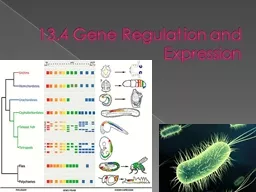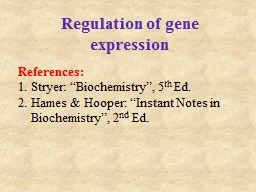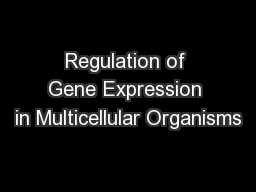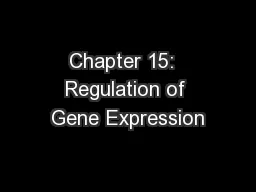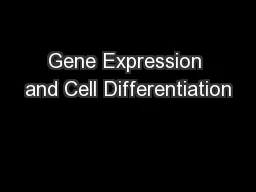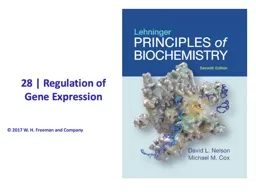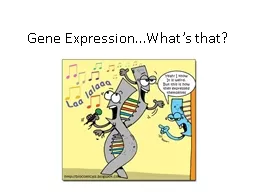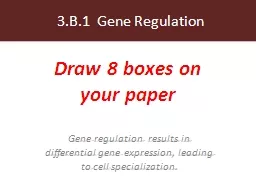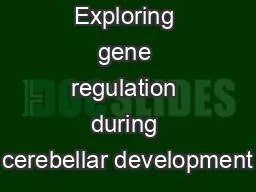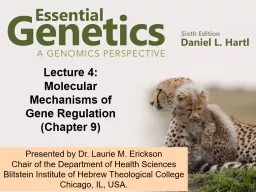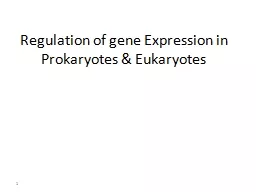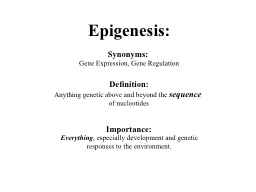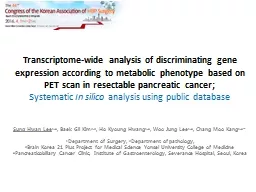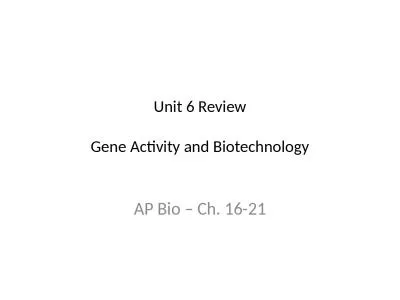PPT-13.4 Gene Regulation and Expression
Author : alexa-scheidler | Published Date : 2018-11-15
THINK ABOUT IT How Does A Cell Know Which Gene To Express amp Which Gene Should Stay Silent Prokaryotic Gene Regulation To conserve resources prokaryotes regulate
Presentation Embed Code
Download Presentation
Download Presentation The PPT/PDF document "13.4 Gene Regulation and Expression" is the property of its rightful owner. Permission is granted to download and print the materials on this website for personal, non-commercial use only, and to display it on your personal computer provided you do not modify the materials and that you retain all copyright notices contained in the materials. By downloading content from our website, you accept the terms of this agreement.
13.4 Gene Regulation and Expression: Transcript
Download Rules Of Document
"13.4 Gene Regulation and Expression"The content belongs to its owner. You may download and print it for personal use, without modification, and keep all copyright notices. By downloading, you agree to these terms.
Related Documents

